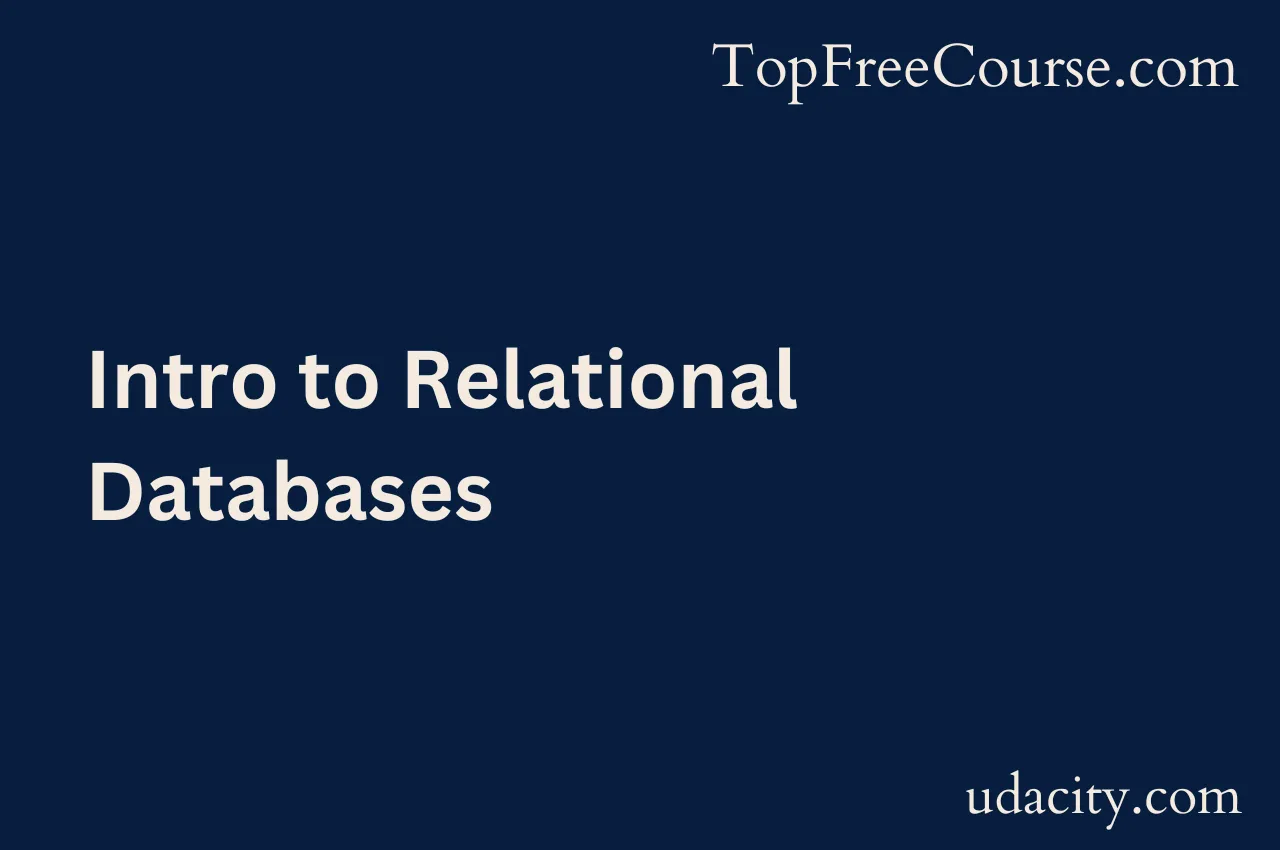What Will You Learn?
Discover the power of relational databases widely utilized across industries. This course offers a foundation in SQL basics, equipping you to seamlessly connect your Python code to relational databases. Unlock the potential to efficiently manage and manipulate data, enhancing your skills for real-world applications in various professional settings.
About This Course
Provider: Udacity
Format: Online
Duration: 7 hours to complete [Approx]
Target Audience: Beginners
Learning Objectives: Upon completion of this free course, participants will acquire fundamental skills in SQL and the ability to integrate their Python code with relational databases.
Course Prerequisites: NA
Assessment and Certification: NA
Instructor: Karl Krueger
Key Topics: Database, SQL, Python DB-API, Advanced SQL
Topic Covered:
- - Welcome to Relational Databases
- - What's a Database
- - Looking at Tables
- - Data Types and Meaning
- - Data Meanings
- - Anatomy of a Table
- - Answering Questions from a Table
- - Aggregations
- - Queries and Results
- - How Queries Happen
- - Favorite Animals
- - Related Tables
- - Uniqueness and Keys
- - Primary Key
- - Joining Tables
- - Database Concepts
- - Types in the SQL World
- - Just a few SQL types
- - Select Where
- - Comparison Operators
- - The One Thing SQL is Terrible At
- - The Experiment Page
- - Select Clauses
- - Count all the Species
- - Insert: Adding Rows Welcome to your Database
- - What's a DB-API
- - Writing Code with DB API
- - Trying out DB API
- - Inserts in DB API
- - Running the Forum
- - Hello PostgreSQL
- - Spammy Tables
- - Stopping the Spam
- - Updating Away the Spam
- - Deleting the Spam Intro to Creating Tables
- - Normalized Design Part One
- - Normalized Design Part Two
- - What's Normalized
- - Create Table and Types
- - Creating and Dropping
- - Declaring Primary Keys
- - Declaring Relationships
- - Foreign Keys
- - Self Joins
- - Counting What Isn't There
- - Subqueries
- - One Query Not Two
- - Views

Comments